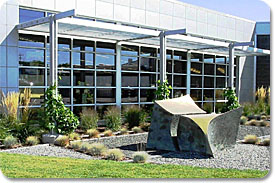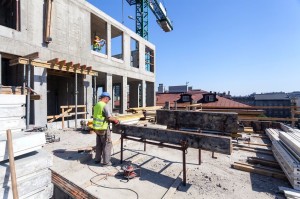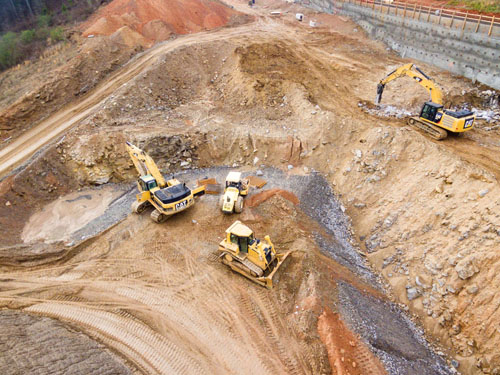The importance of sustainable design in civil engineering
 In recent years, the emphasis on sustainable design within the field of civil engineering has grown exponentially. As the global community becomes increasingly aware of the environmental impacts of development and construction, civil engineers are at the forefront of creating infrastructure that is not only functional and efficient but also environmentally responsible. Sustainable design in civil engineering involves a holistic approach that balances economic viability, environmental stewardship, and social responsibility. This blog will explore the importance of sustainable design in civil engineering, its benefits, and the strategies that can be employed to achieve it.
In recent years, the emphasis on sustainable design within the field of civil engineering has grown exponentially. As the global community becomes increasingly aware of the environmental impacts of development and construction, civil engineers are at the forefront of creating infrastructure that is not only functional and efficient but also environmentally responsible. Sustainable design in civil engineering involves a holistic approach that balances economic viability, environmental stewardship, and social responsibility. This blog will explore the importance of sustainable design in civil engineering, its benefits, and the strategies that can be employed to achieve it.
Understanding sustainable design in civil engineering
Sustainable design in civil engineering is an approach that seeks to minimize the environmental impact of construction and infrastructure projects while maximizing their social and economic benefits. This involves considering the entire lifecycle of a project, from planning and design through construction, operation, and eventual decommissioning. The goal is to create infrastructure that meets the needs of the present without compromising the ability of future generations to meet their own needs.
Key principles of sustainable design in civil engineering include energy efficiency, resource conservation, pollution reduction, and the promotion of biodiversity. By integrating these principles into their projects, civil engineers can help mitigate the adverse effects of development on the environment and contribute to the creation of more sustainable communities.
Benefits of sustainable design
Environmental benefits
One of the primary benefits of sustainable design is the reduction of environmental impact. By using environmentally friendly materials, reducing waste, and incorporating energy-efficient technologies, civil engineers can significantly lower the carbon footprint of their projects. Sustainable design also promotes the conservation of natural resources, such as water and energy, and helps protect ecosystems and biodiversity by minimizing habitat destruction and pollution.
Economic benefits
Sustainable design is not only good for the environment but also makes economic sense. While the initial costs of implementing sustainable practices may be higher, they often result in long-term savings. For example, energy-efficient buildings and infrastructure can lead to significant reductions in energy and maintenance costs over time. Additionally, sustainable design can enhance property values and attract investment, as more businesses and consumers prioritize sustainability in their decision-making processes.
Social benefits
Sustainable design also has important social benefits. By creating healthier and more livable environments, civil engineers can improve the quality of life for communities. Sustainable infrastructure, such as green spaces and pedestrian-friendly urban areas, promotes physical activity and social interaction, leading to healthier and more connected communities. Moreover, sustainable design can also help address social equity issues by providing access to clean water, energy, and transportation for all members of society.
Strategies for achieving sustainable design
Energy efficiency
One of the most effective strategies for achieving sustainable design is improving energy efficiency. This can be accomplished through the use of energy-efficient building materials, lighting, and HVAC systems. Renewable energy sources, such as solar, wind, and geothermal, should also be incorporated into the design of infrastructure projects to reduce reliance on fossil fuels and lower greenhouse gas emissions.
Resource conservation
Resource conservation is another key component of sustainable design. This involves using materials that are recycled, renewable, or have a low environmental impact. Engineers should also design projects to minimize waste and maximize the reuse and recycling of materials. Water conservation measures, such as low-flow fixtures, rainwater harvesting, and wastewater recycling, are also important for reducing the environmental impact of infrastructure projects.
Pollution reduction
Reducing pollution is essential for sustainable design. This can be achieved by implementing best practices for construction and operation, such as minimizing soil erosion, controlling stormwater runoff, and reducing air and water pollution. The use of green building materials and technologies, such as low-VOC paints and sealants, can also help reduce indoor and outdoor pollution.
Biodiversity promotion
Promoting biodiversity is another important aspect of sustainable design. This involves protecting and enhancing natural habitats and ecosystems through careful planning and design. Green infrastructure, such as green roofs, walls, and urban forests, can provide habitat for wildlife and help mitigate the effects of urbanization on biodiversity. Engineers should also consider the impacts of their projects on local wildlife and take steps to minimize habitat fragmentation and disturbance.
Community engagement
Engaging with the community is crucial for the success of sustainable design projects. By involving stakeholders in the planning and design process, engineers can ensure that projects meet the needs and priorities of the community. This can also help build support for sustainable initiatives and foster a sense of ownership and responsibility among community members.
The role of civil engineers in promoting sustainability
Civil engineers play a critical role in promoting sustainability through their work. By incorporating sustainable design principles into their projects, they can help create infrastructure that is environmentally responsible, economically viable, and socially beneficial. This requires a commitment to continuous learning and innovation, as well as collaboration with other professionals, such as architects, urban planners, and environmental scientists.
At McNeil Engineering, we are dedicated to advancing sustainable design in civil engineering. Our comprehensive design services, including civil engineering, structural engineering, land surveying, high-definition scanning (HDS), landscape architecture, and consulting services, are tailored to meet the evolving needs of the private and public sectors. We strive to deliver timely, responsive, and economical design solutions that prioritize sustainability and enhance the quality of life for communities.
To learn more about how McNeil Engineering can help you achieve your sustainability goals, visit McNeil Engineering. Our team of experts is committed to providing innovative and sustainable design solutions that meet the needs of our clients and the environment. Together, we can build a better future through sustainable design in civil engineering.
Sustainable design in civil engineering is essential for addressing the environmental, economic, and social challenges of the 21st century. By embracing sustainable practices and principles, civil engineers can help create infrastructure that meets the needs of the present while preserving the resources and opportunities for future generations. At McNeil Engineering, we are proud to be at the forefront of this important movement, working to deliver design solutions that are both innovative and sustainable.









